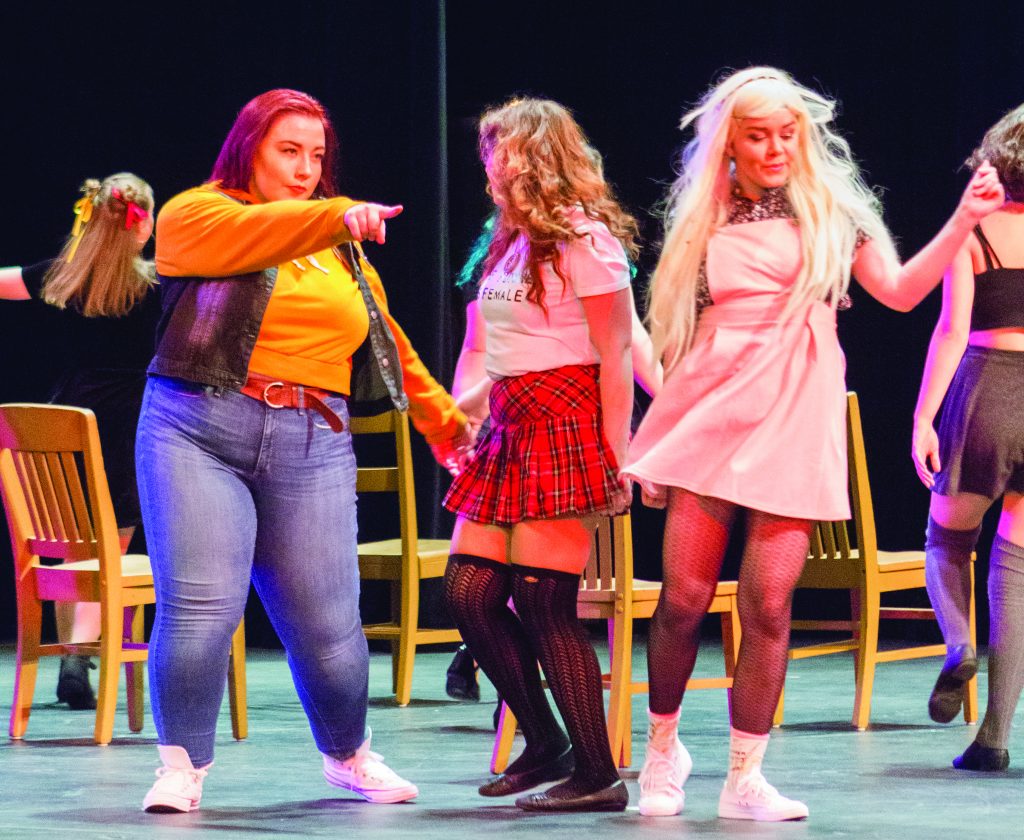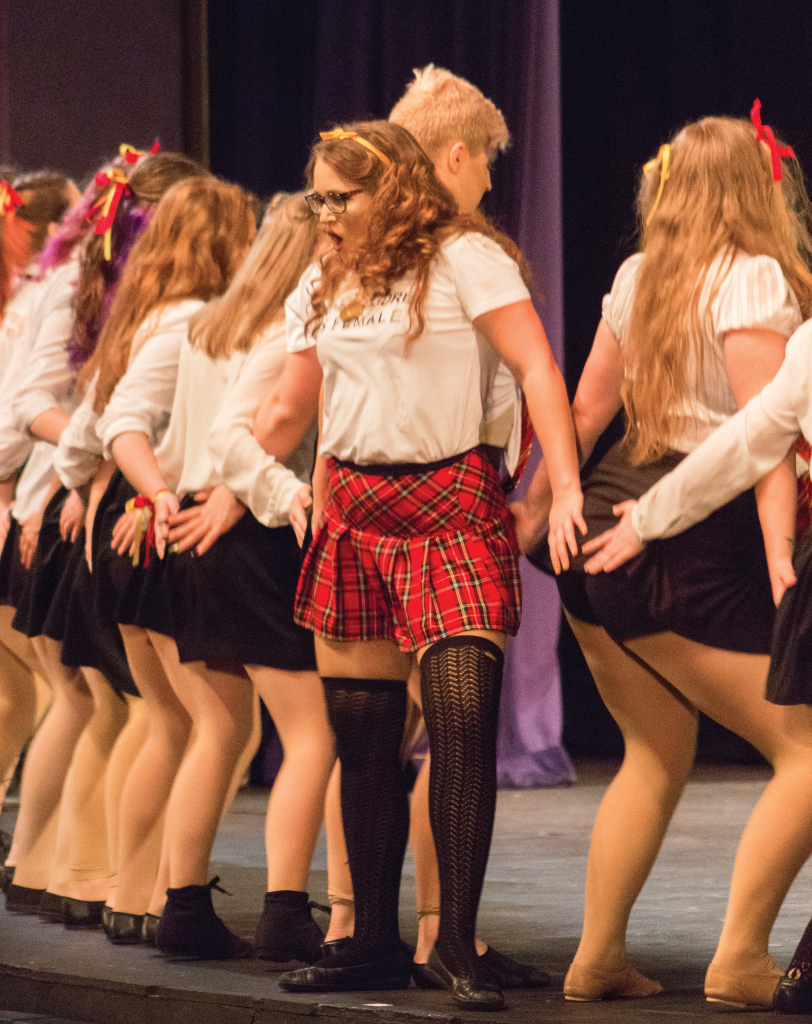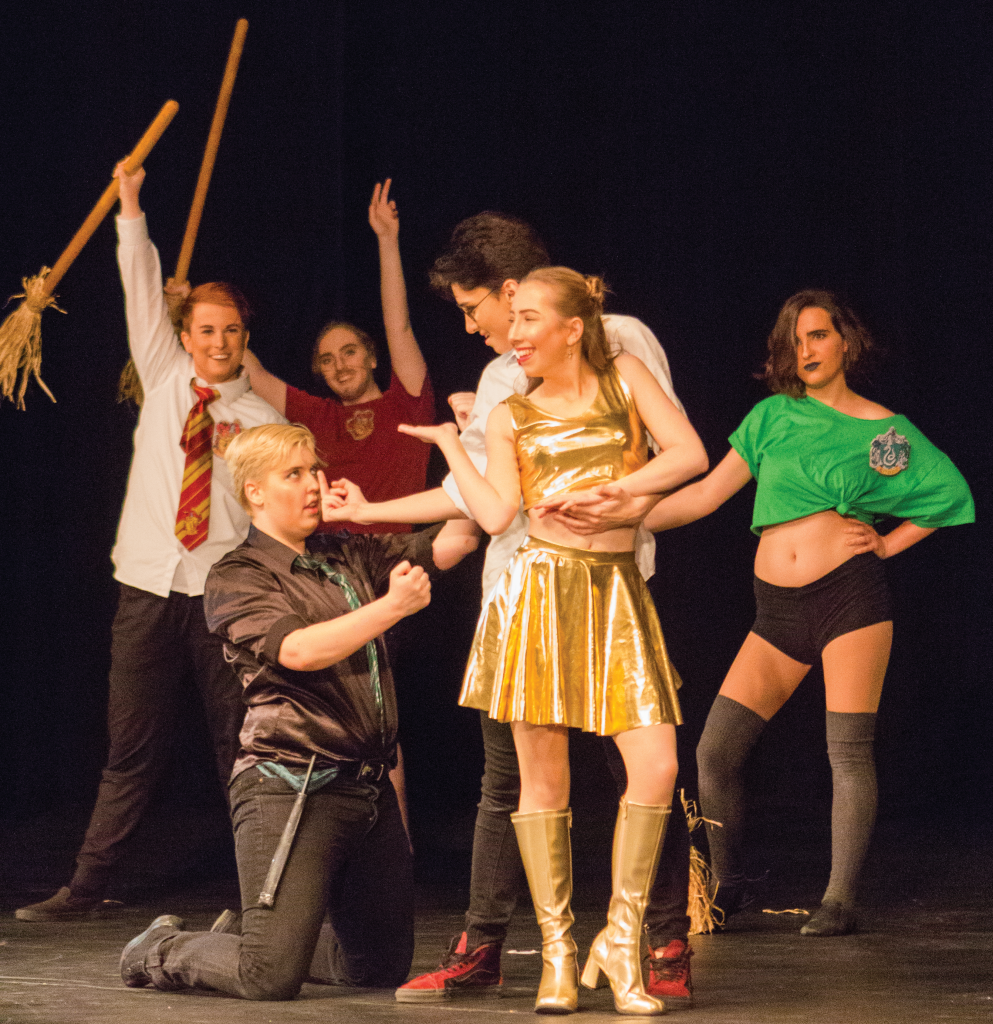
Mikaela Wong | Staff Writer
In what has become arguably one of the most anticipated events of the school year, the Western Oregon University Drag Show lived up to its hype. The 23rd annual drag show broke records as it became the first time that the show held two production nights and both completely sold out.

This year’s theme: “Harry Potter and The Prisoner of the Gender Binary.” A gender binary is defined by Wikipedia as “the classification of gender into two distinct, opposite, and disconnected forms of masculine and feminine, whether by social system or cultural belief.”
The main overarching themes in the show were inclusiveness, representation and acceptance.
Dancer Seraphim Benoist said, “We really focused on making this show a safe and inclusive space for absolutely anyone, no matter how you identify. No matter what you think, you’re here to dance and be beautiful.”
Susannah Doepken wrote and directed last year’s show, and played the role of Lupin this year.
Doepken added, “I think there’s a really wide range of characters and it’s written in a way where a lot of people can feel represented. Hopefully someone in the audience who has never seen representation of themselves can feel represented in the show.”
At one point in the performance, many of the characters stood at the front of the stage holding flags that represented people of different identities such as asexual, bisexual, allies and of course, the rainbow pride flag.
Rhianna Salman, who wrote and directed the show, dedicated it to Marsha P. Johnson and Sylvia Rivera, two transgender women who were one of the first to fight back during the riots in New York City in 1969 at the Stonewall Inn, which later became known as the place where the Pride parade was born.
“We literally have them to thank for being able to be here,” said Salman, “the Stonewall riots and the first pride march … that’s why I choose to represent Sylvia Rivera and Marsha P. Johnson… I also want to thank Shelby Wanser, Sam Fennell and Rory Krehbiel for contributing to the script writing.”

Rarely during the show was there silence in the audience. Bouts of screaming, whistling, cheering and shouting were continuous throughout the various numbers that consisted of choreographed dances, lip syncing and lots of pelvic thrusting. The energy in the room was electric, with sexual jokes being cracked every other line.
Daria Keidar, who played Harry in the show, heard about the show through friends she met in dance class.
“I just wanted to be a part of it and part of the show so I just auditioned,” Keidar said. “I’ve been dancing since I was five years old and I’ve been doing theater since I was in middle school.” When asked how she reacted when she realized she got the lead role as a first-year, Keidar replied, “when it finally hit me I was just like ‘oh f—, I’m the lead.’”
The bold personalities that filled the stage were welcomed with cheers and applause that inspired everyone to own their identities, no matter what that looked like to others. The narration encouraged people to accept each other wholeheartedly, and challenged them to stray away from the social constructs that constrict growth and love of one’s individuality. The drag show provides an opportunity to claim the true identity that calls and encourages people to own every aspect of it- even if it changes over time. After all, as the show said, “You might find yourself in a new closet everyday, it just means you get to find a different outfit to come out in.”
Contact the author at mwong16@wou.edu
Photos by Ashlynn Norton

